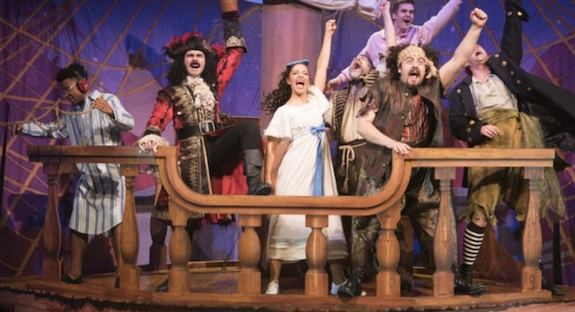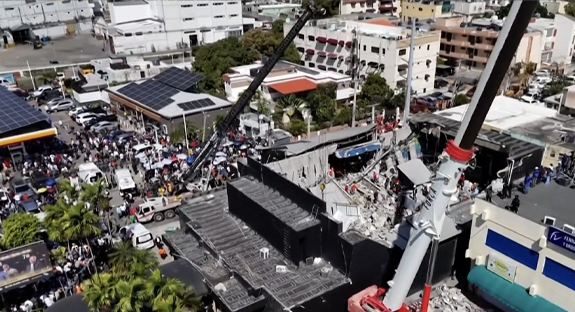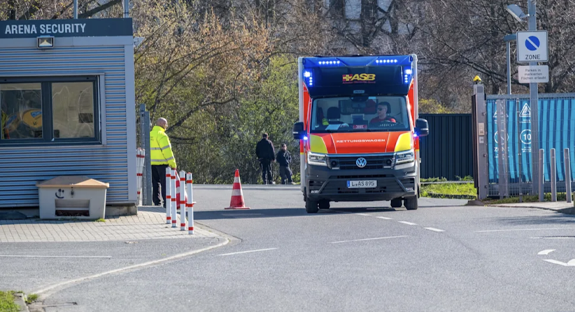Mischief Theatre’s Peter Pan Goes Wrong is a “play within a play” that showcases extraordinary and comical use of its stage where the set becomes a central figure in the story. The play is about a theatre company trying to put on a performance of Peter Pan, but experiences multiple yet humorous mishaps along the way.
Peter Pan Goes Wrong uses a rotating revolve as the main set, has actors flying in on wires, and failing props and other collapsable sets, so the chaos that ensues on stage and backstage becomes an important and entertaining factor in the play. However, one of the most interesting aspects is how the stage helps the actors tell the story. According to the Young Perspective, the “set is ingeniously designed to fail in every way possible,” and “set designer, Simon Scullion, must have had his work cut out to safely create rooms able to collapse onto cast members in a multitude of ways. Not only did the play make use of set mishaps, but every other design element thinkable; lights, costumes, props, pyrotechnics, sound recordings…added to the madness”.
In a 2016 article for Whats on Stage, set designer, Simon Scullion, wrote “the show is written to take place on a revolve which is the perfect device to frame the show by its constant motion and ability to reveal and propel actions”. He explains the set, revolve, props, and costumes had to be compact enough “to work within a touring model” and fit in “one forty foot trailer for transport” but “also substantial enough” in size “to fill some large stages”.
Hence, the rotating revolve is one of the main factors used to help the actors interact with the set. Mr. Scullion also states the revolve has a seven-and-a-half metre diameter and is powered by a motor that can move at high speeds so that it can “create a sense of danger” as the play reaches its climax. He further explains that the design of the set requires the revolve to be divided into “three equal spaces”, so a scene can take place in one section while one of the other sections can be “changed out of view for a new scene”, and that the design is not level with the stage to give the impression the actors are “trapped on a fast moving merry go round”. The design is also meant to aid the actors in moving freely from “scene to scene” on the revolve, while it moves and keeps all the “mechanical gags and malfunctions” that are a part of the play’s story.
In a review of the play, The Scotsman gives a good description of how the actors and set interact by stating that “Peter Pan also throws in the chaos of wire-flying, prompting ongoing injuries and some cast re-jigging, with gormless backstage ‘technicians’ thrust into the limelight as yet another prop fails”. Along these lines, the design of the set is very important to the story, but also fulfils part of the experience the play is trying to generate for the audience.
In the Whats on Stage article, Mr. Scullion says the brief for the set was that it should appear dangerous, but as he states “takes a lot of planning”. The multiple factors of flying performers, failing props, the rotating revolve, and collapsing sets required him to “choreograph all the scenes in quite a lot of detail while also trying to give the performers a series of spaces that they could play…”.
Overall, the design and use of the set as a central figure in the play is the key to telling the story and immersing the audience as well.
[Aiyana Tandon/Young Perspective – article]
[Simon Scullion/WhatsOnStage – article]
[The Scotsman – article]
[Daniel Perks/WhatsOnStage – article]
[Pictures – Alastair Muir/WhatsOnStage/The Scotsman]





